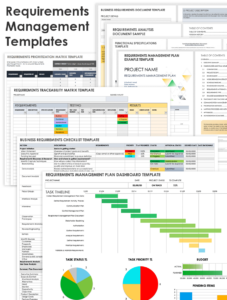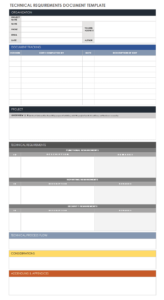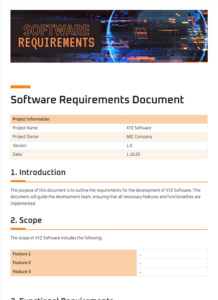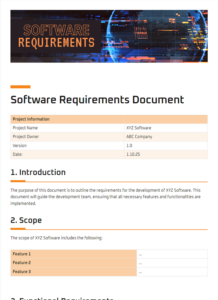When developing a new hardware system, it’s crucial to clearly define the hardware requirements. This ensures that the system will meet the intended performance and compatibility goals. A hardware requirements document template provides a structured format for capturing and documenting these requirements. It helps ensure that all necessary information is gathered, organized, and communicated effectively.
Using a well-structured hardware requirements document template offers numerous benefits. It streamlines the requirements gathering process, enabling efficient collaboration among engineers, designers, and stakeholders. It ensures completeness and consistency by guiding users through a comprehensive list of relevant criteria. Moreover, it facilitates traceability, making it easier to track changes and align requirements with design and implementation.
Defining Hardware Requirements
The hardware requirements document template typically includes sections for describing general system requirements, specific component requirements, performance targets, environmental constraints, and compliance regulations. General system requirements outline the overall purpose, functionality, and intended use of the system. Specific component requirements detail the technical specifications for each hardware component, including processors, memory, storage, and peripherals. Performance targets define the expected performance metrics, such as speed, throughput, and latency.
Environmental constraints specify the operating conditions that the hardware must meet, such as temperature range, humidity levels, and vibration tolerance. Compliance regulations identify any industry standards or regulatory requirements that the system must adhere to, such as safety standards or environmental regulations. By comprehensively capturing these requirements, the document provides a clear roadmap for hardware design and procurement.
Document Structure and Content
The structure and content of a hardware requirements document template may vary depending on the specific project and industry. However, common elements include:
- Executive Summary: Provides a concise overview of the document’s purpose and key requirements.
- Scope: Defines the boundaries of the project and the hardware components included.
- Requirements: Lists the detailed hardware requirements organized by category or component.
- Verification Criteria: Outlines the methods and criteria for verifying that the hardware meets the requirements.
- Assumptions and Constraints: Identifies any assumptions made and constraints that may impact the requirements.
- References: Includes references to supporting documents, such as industry standards or design specifications.
Conclusion
A hardware requirements document template serves as a valuable tool for capturing, organizing, and communicating the hardware requirements for a new system. By using a structured template, engineers and designers can ensure that all necessary information is gathered, documented, and reviewed, leading to a more efficient and effective hardware development process.
Regularly reviewing and updating the hardware requirements document template helps ensure that it remains aligned with project goals and technological advancements. This iterative approach ensures that the system continues to meet the evolving needs of the organization and the end-users.



